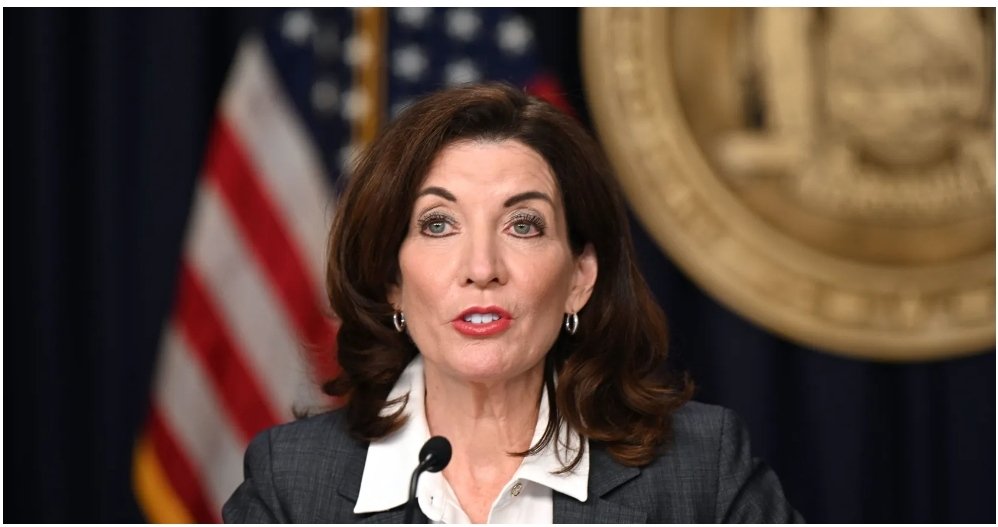Gov Hochul says she supports bill to cap NYC school class sizes

Governor Kathy Hochul said on Thursday that she supports sweeping legislation that would establish more aggressive class size limits in New York City’s public schools, the strongest comments she’s made since the bill was overwhelmingly passed by the legislature last month.
“I’m looking closely at it. I’m inclined to be supportive,” Hochul said on WNYC’s Brian Lehrer Show, adding she spoke yesterday with Mayor Eric Adams and expected a resolution in the coming days. “I just have to work out a few more details with the mayor.”
The Adams administration has opposed the bill, warning that the legislation would cost hundreds of millions of dollars a year to implement and could detract from other funding priorities.
Hochul suggested that funding was a sticking point and is considering “chapter amendments” that would allow the legislation to go into effect now but with changes that would be taken up by the legislature next year.
“There might be something about a funding source or a responsibility that’s, you know, on the shoulders of the state right now — and I have to make sure I’m protecting the state taxpayers as well,” Hochul said. “So there are some loose ends, but philosophically it’s something I’m supporting.”
State lawmakers passed the bill in early June with just six voting no across both chambers. But Hochul has yet to take action, drawing pressure from advocates and the city’s teachers union to sign it into law. The legislation would significantly shrink the maximum number of students allowed in each classroom, which for most grade levels is currently set between 30 and 34 students (the limit for kindergarten is 25).
By 2027, the legislation would cap classes at 20 students in kindergarten through third grade, 23 students for grades 4-8, and 25 students for high school classes. Physical education and classes for “performing groups” must be limited to 40 students.
Proponents of the bill argue that stricter class size limits are popular among educators and parents. They point to research that suggests smaller classes boost student test scores and can also lead to high attendance and greater classroom engagement.
“The governor should sign the bill now since the school year is about to start, and as is since the bill was passed nearly unanimously by both chambers of the legislature,” state Sen. John Liu, the legislation’s main sponsor, said in a statement. Asked about the governor’s suggestion that the bill be tweaked, a spokesperson for Liu wrote in an email that “the legislature can easily override a veto and therefore would not be inclined to accept the governor’s request for a chapter amendment.”
Michael Mulgrew, head of the city’s teachers union, wrote in a statement that “the parents, teachers and students of New York City want this legislation signed and signed as soon as possible.”
The bill has drawn criticism from City Hall and some budget watchdogs who argue that it is an expensive mandate; city officials have estimated the annual price tag for grades K-5 alone would be $500 million.
At the same time, the Adams administration is reducing most school budgets, which some educators say will have the effect of raising class sizes on some campuses this fall.
“While this administration strongly supports lower class sizes, unless there is guaranteed funding attached to those mandates, we will see cuts elsewhere in the system that would harm our most vulnerable students in our highest need communities,” Amaris Cockfield, an Adams spokesperson, said in a statement.
There are also unresolved questions about how the bill would function in practice. The cap could reduce the number of available seats at some of the city’s most coveted schools or require construction of new classrooms even as enrollment has fallen significantly in recent years. It’s also unclear if the policy would benefit the highest-need students the most, as it could require big investments at schools with fewer low-income students.
“Much of the effort will be expended on other students less likely to be helped by the reduction,” Andrew S. Rein, the president of the Citizens Budget Commission, wrote in a letter to Hochul urging her to veto the bill. “There also will be unintended consequences as resources to reduce class sizes are shifted from other programs, which may well be more beneficial.”
The bill says that class size reductions “shall prioritize schools serving populations with higher poverty levels” though it does not define what that means. The legislation also lays out some exemptions to the mandates, including “space,” “over-enrolled students,” “license area shortages” and “severe economic distress.”
In an interview last month, Liu said the precise definitions of those carve-outs should be hashed out between the district and union officials, which must collectively approve any exemptions according to the bill.
“This language is trying to foresee problem situations where meeting the class size mandate would be extremely difficult,” he said. “We’re not trying to create impossible situations here.”







